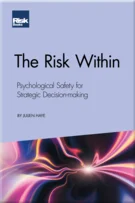Financial Correlation Modelling – Bottom-up Approaches
Introduction
Correlation Basics: Definitions, Applications and Terminology
Empirical Properties of Correlation: How do Correlations Behave in the Real World?
The Pearson Correlation Model – Work of the Devil?
Cointegration – A Superior Concept to Correlation?
Financial Correlation Modelling – Bottom-up Approaches
Valuing CDOs with the Gaussian Copula – What Went Wrong?
The One-Factor Gaussian Copula Model – Too Simplistic?
Financial Correlation Models – Top-Down Approaches
Stochastic Correlation Models
Quantifying Market Correlation Risk
Quantifying Credit Correlation Risk
Hedging Correlation Risk
Correlation Trading Strategies – Opportunities and Limitations
Credit Value at Risk under Basel III – Too Simplistic?
Basel III and XVAs
Fundamental Review of the Trading Book
The Future of Correlation Modelling
Answers to Questions and Problems in Correlation Risk Modelling and Management
“Fortune sides with him who dares”
– Virgil
In this chapter we address correlation models, which were specifically designed to measure the association between financial variables. We will concentrate on bottom-up correlation models that collect information, quantify it and then aggregate the information to derive an overall correlation result.
CORRELATING BROWNIAN MOTIONS (HESTON 1993)
One of the most widely applied correlation approaches used in finance was generated by Steven Heston in 1993. Heston applied the approach to negatively correlate stochastic stock returns dS(t)/S(t) and stochastic volatility σ(t). The core equations of the original Heston model are the two stochastic differential equations (SDEs)
| (5.1) |
and
| (5.2) |
where
S: variable of interest, eg, a stock price
µ: expected growth rate of S
σ: expected volatility of S
dz: standard Brownian motion, ie, is i.i.d. (independently and identically distributed). In particular ε(t) is a random drawing from a
Copyright Infopro Digital Limited. All rights reserved.
As outlined in our terms and conditions, https://www.infopro-digital.com/terms-and-conditions/subscriptions/ (point 2.4), printing is limited to a single copy.
If you would like to purchase additional rights please email info@risk.net
Copyright Infopro Digital Limited. All rights reserved.
You may share this content using our article tools. As outlined in our terms and conditions, https://www.infopro-digital.com/terms-and-conditions/subscriptions/ (clause 2.4), an Authorised User may only make one copy of the materials for their own personal use. You must also comply with the restrictions in clause 2.5.
If you would like to purchase additional rights please email info@risk.net











